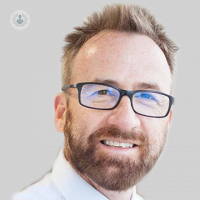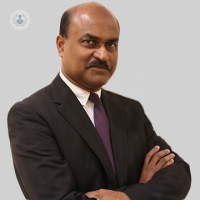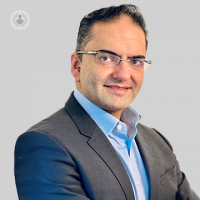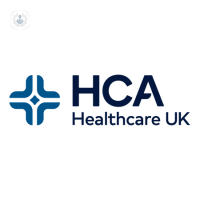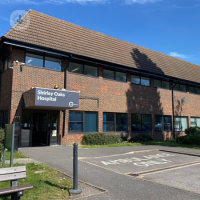What is leukaemia?
Leukaemia is a group of cancers of the white blood cells. It usually begins in the bone marrow (the spongy centre of our bones), where blood cells are made.
Normally, stem cells in the bone marrow mature into different sorts of blood cells (red, white and platelets) in a regulated manner. Different types of leukaemia affect the bone marrow in different ways, but all result in a high number of abnormal white blood cells, which are unable to do their job of fighting infections, do not die as they age, and continue to accumulate and replace normal cells.
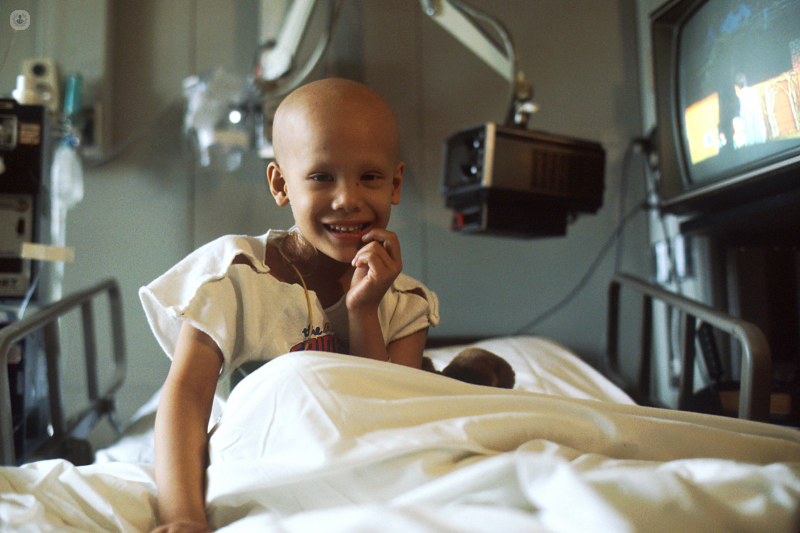
There are several types of leukaemia, including:
- Acute myeloid leukaemia
- Chronic myeloid leukaemia
- Acute lymphoblastic leukaemia (ALL) – the most common form of leukaemia in children
- Chronic lymphocytic leukaemia (CLL)
- Hairy cell leukaemia
What are the symptoms of leukaemia?
Symptoms of leukaemia are vague and non-specific, meaning that tests run by a doctor are needed to make a diagnosis. Symptoms tend to be caused by the lack of healthy blood cells as the cancerous cells overcrowd the bone marrow, hampering cell production, including production of red blood cells (RBCs), which, in turn, leads to symptoms of anaemia.
Typical symptoms include:
- Frequent, long-lasting, and/or severe infections – the reduced number of healthy white cells cannot fight diseases as effectively.
- Fatigue, weakness, getting out of breath easily – signs of anaemia
- Fever
- Malaise
- Bleeding and bruising easily – this is due to a shortage of platelets, which are responsible for clotting.
Causes of leukaemia
In the majority of cases, the cause of leukaemia is unknown. What is clear is that it is not contagious.
Potential risk factors include:
- Age – most types of leukaemia affect elderly people more than anyone else, while ALL affects mainly children.
- Gender – leukaemia is more common on males than females.
- Genetics – there is a slightly higher risk of leukaemia if there is a family history of the condition.
- Exposure to chemicals
- Exposure to radiation
- Bone marrow disorders, such as myelodysplastic syndrome (MDS) and the myeloproliferative neoplasms (MPN) seem to predispose patients to certain forms of leukaemia.
Can it be prevented?
Currently there is no way to prevent leukaemia, but avoiding exposure to toxic substances and radiation can help to minimise the risk.
What is the treatment for leukaemia?
The basic treatment for leukaemia is chemotherapy, a procedure in which drugs used to destroy cancer cells are injected. Chemotherapy is usually given in blocks or cycles, with breaks in between in allow healthy cells to recover.
Other therapies that may be used, depending on the nature of the case include:
- Radiotherapy
- Biological therapy
- Stem cell transplant
- Targeted drug therapy
Leukaemia
Dr Michael Potter - Haematology
Created on: 03-14-2017
Updated on: 09-13-2024
Edited by: Sophie Kennedy
What is leukaemia?
Leukaemia is a group of cancers of the white blood cells. It usually begins in the bone marrow (the spongy centre of our bones), where blood cells are made.
Normally, stem cells in the bone marrow mature into different sorts of blood cells (red, white and platelets) in a regulated manner. Different types of leukaemia affect the bone marrow in different ways, but all result in a high number of abnormal white blood cells, which are unable to do their job of fighting infections, do not die as they age, and continue to accumulate and replace normal cells.

There are several types of leukaemia, including:
- Acute myeloid leukaemia
- Chronic myeloid leukaemia
- Acute lymphoblastic leukaemia (ALL) – the most common form of leukaemia in children
- Chronic lymphocytic leukaemia (CLL)
- Hairy cell leukaemia
What are the symptoms of leukaemia?
Symptoms of leukaemia are vague and non-specific, meaning that tests run by a doctor are needed to make a diagnosis. Symptoms tend to be caused by the lack of healthy blood cells as the cancerous cells overcrowd the bone marrow, hampering cell production, including production of red blood cells (RBCs), which, in turn, leads to symptoms of anaemia.
Typical symptoms include:
- Frequent, long-lasting, and/or severe infections – the reduced number of healthy white cells cannot fight diseases as effectively.
- Fatigue, weakness, getting out of breath easily – signs of anaemia
- Fever
- Malaise
- Bleeding and bruising easily – this is due to a shortage of platelets, which are responsible for clotting.
Causes of leukaemia
In the majority of cases, the cause of leukaemia is unknown. What is clear is that it is not contagious.
Potential risk factors include:
- Age – most types of leukaemia affect elderly people more than anyone else, while ALL affects mainly children.
- Gender – leukaemia is more common on males than females.
- Genetics – there is a slightly higher risk of leukaemia if there is a family history of the condition.
- Exposure to chemicals
- Exposure to radiation
- Bone marrow disorders, such as myelodysplastic syndrome (MDS) and the myeloproliferative neoplasms (MPN) seem to predispose patients to certain forms of leukaemia.
Can it be prevented?
Currently there is no way to prevent leukaemia, but avoiding exposure to toxic substances and radiation can help to minimise the risk.
What is the treatment for leukaemia?
The basic treatment for leukaemia is chemotherapy, a procedure in which drugs used to destroy cancer cells are injected. Chemotherapy is usually given in blocks or cycles, with breaks in between in allow healthy cells to recover.
Other therapies that may be used, depending on the nature of the case include:
- Radiotherapy
- Biological therapy
- Stem cell transplant
- Targeted drug therapy
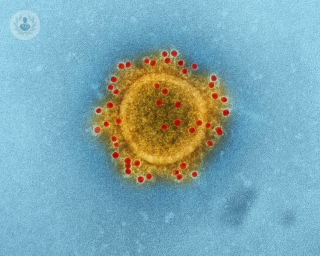

Immunodeficiency: an in-depth explanation
By Dr Ricardo Jose
2025-01-15
Immunodeficiency occurs when the immune system suffers impairment and, as a result, cannot function properly. In our latest article, we spoke with esteemed pulmonologist, Dr Ricardo Jose, to learn more about this immune-system-threatening condition. See more
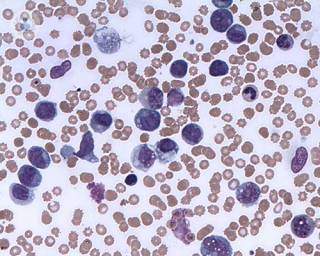

The types of leukaemia, survival rate and outlook
By Dr Salim Shafeek
2025-01-12
There are different types of leukaemia, with which the symptoms of each can vary, depending on which blood cells are affected. Expert haematologist Dr Salim Shafeek discusses the disease in depth, including the symptoms and outlook for patients diagnosed with cancer... See more
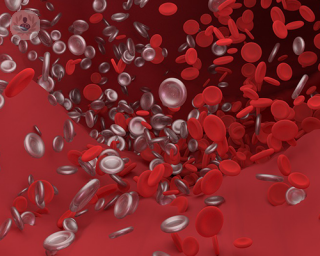

Chronic lymphocytic leukaemia: an all-you-need-to-know guide
By Dr Jaimal Kothari
2025-01-10
Chronic lymphocytic leukaemia (CLL) is a very slow growing type of blood cancer which begins in the bone marrow. Dr Jaimal Kothari is here to explain all you need to know about this condition. See more
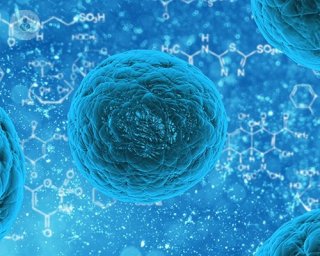

All about allogeneic stem cell transplantation
By Professor Stephen MacKinnon
2025-01-09
We hear specialist insight on the process of allogeneic stem cell transplantation, a common procedure for a number of blood and bone marrow disorders. See more
Experts in Leukaemia
-
Dr Michael Potter
HaematologyExpert in:
- Leukaemia
- Lymphoma
- Multiple myeloma
- Myeloproliferative disorders
- Hodgkin's lymphoma
- Anaemia
-
Dr Salim Shafeek
HaematologyExpert in:
- Leukaemia
- Lymphoma
- Multiple myeloma
- Myeloproliferative disorders
- Anaemia
- Thrombosis
-
Dr Varun Mehra
HaematologyExpert in:
- Myelodysplastic syndrome
- Leukaemia
- Bone marrow transplant
- Lymphoma
- Myeloproliferative disorders
- Low blood count
-
Dr Richard Kaczmarski
HaematologyExpert in:
- Multiple myeloma
- Leukaemia
- Lymphoma
- Stem cells
- Anaemia
- Thalassaemia
-
Professor John Gribben
HaematologyExpert in:
- Leukaemia
- Lymphoma
- Stem cells
- Multiple myeloma
- Sickle cell anaemia
- See all

The Harborne Hospital - part of HCA Healthcare
The Harborne Hospital - part of HCA Healthcare
Mindelsohn Way, B15 2FQ
No existe teléfono en el centro.
By using the telephone number provided by TOP DOCTORS, you automatically agree to let us use your phone number for statistical and commercial purposes. For further information, read our Privacy Policy
Top Doctors

London Haematology
London Haematology
22 Devonshire Place, W1G 6JA
No existe teléfono en el centro.
By using the telephone number provided by TOP DOCTORS, you automatically agree to let us use your phone number for statistical and commercial purposes. For further information, read our Privacy Policy
Top Doctors

Shirley Oaks Hospital - part of Circle Health Group
Shirley Oaks Hospital - part of Circle Health Group
Poppy Lane, Croydon CR9 8AB
No existe teléfono en el centro.
By using the telephone number provided by TOP DOCTORS, you automatically agree to let us use your phone number for statistical and commercial purposes. For further information, read our Privacy Policy
Top Doctors
-
The Harborne Hospital - part of HCA Healthcare
Mindelsohn Way, B15 2FQ, BirminghamExpert in:
- Digestive
- Cancer
- Orthopaedic surgery
- Thoracic Surgery
- Diagnostic Imaging
- Obstetrics and Gynaecology
-
London Haematology
22 Devonshire Place, W1G 6JA, W1G Marylebone LondonExpert in:
- CAR-T therapy
- Haemato-oncology
- Haematology
- Myeloproliferative disorders
- Red blood cell disorders
- Stem cell transplant
-
Shirley Oaks Hospital - part of Circle Health Group
Poppy Lane, Croydon CR9 8AB, South LondonExpert in:
- General Surgery
- Orthopaedic surgery
- Plastic surgery, reconstructive and aesthetics
- Gastroenterology
- Obstetrics and Gynaecology
- Neurosurgery
- Most viewed diseases, medical tests, and treatments
- Immunotherapy
- CAR-T cells
- Hormone therapy
- Hodgkin's lymphoma
- Genetic testing
- Nipple discharge
- Head and neck cancer
- Medicolegal
- Peritoneal carcinomatosis
- Family history of breast cancer
